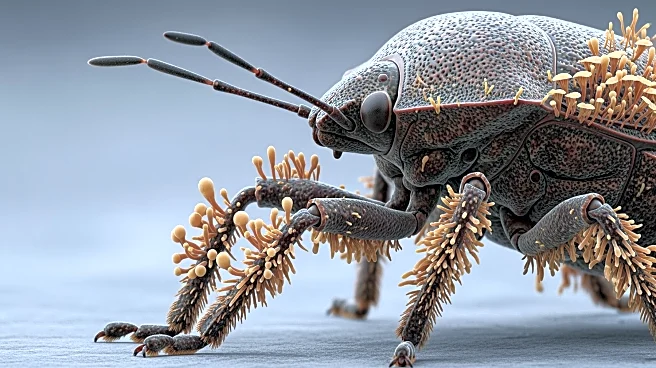What's Happening?
A team of Japanese researchers has uncovered a surprising discovery regarding the Dinidoridae family of stinkbugs. Previously thought to possess tympanal organs on their hind legs for hearing, these structures have been identified as mobile fungal gardens.
The study, led by Takema Fukatsu from the National Institute of Advanced Industrial Science and Technology in Tokyo, focused on the species Megymenum gracilicorne. The researchers found that the supposed tympanal organs lacked the necessary components for hearing, such as tympanal membranes and sensory neurons. Instead, these structures contained thousands of pores filled with benign filamentous fungi, supported by secretory cells that likely provide nutrients for fungal growth.
Why It's Important?
This discovery challenges long-held assumptions about the anatomy and function of stinkbugs' legs, particularly in the Dinidoridae family. The findings could have broader implications for understanding insect biology and ecology, as well as the evolutionary adaptations of stinkbugs. By revealing a previously unknown symbiotic relationship between stinkbugs and fungi, the study opens new avenues for research into insect-fungal interactions. This could potentially lead to insights into pest control strategies, as understanding these relationships might help in developing methods to manage stinkbug populations, which are known agricultural pests.
What's Next?
Further research is likely needed to explore the ecological and evolutionary significance of these fungal gardens. Scientists may investigate how widespread this phenomenon is among other insect species and what role these fungi play in the life cycle and behavior of stinkbugs. Additionally, the study could prompt a reevaluation of other insect anatomical features previously misidentified, leading to a deeper understanding of insect physiology and ecology.
















